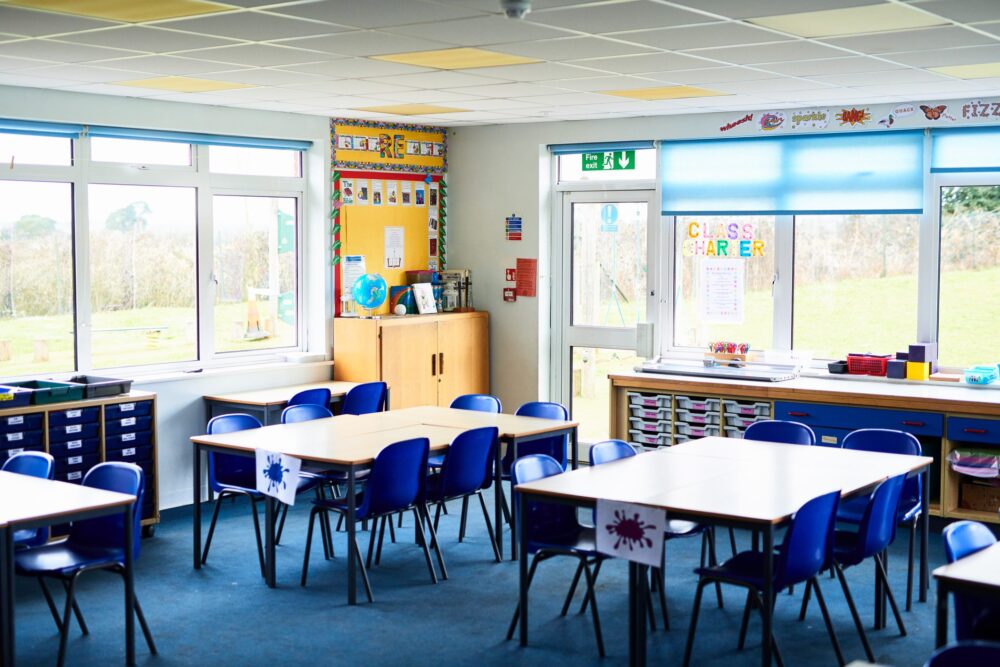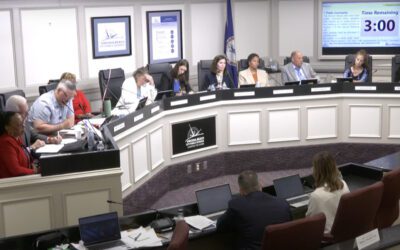
Photo: Getty Images
On April 23rd, the Virginia Board of Education concluded the second round of stakeholder feedback sessions for their new school performance and support framework. They will continue revising the plan over the next few months, with full implementation of the rating system expected for the 2025-2026 school year.
This overhaul is long overdue.
Historical reliance on metrics set by minimal federal and state requirements has proven inadequate, especially as statewide assessment scores continue to stagnate below pre-pandemic levels. However, though stakeholders, board members, and policymakers alike agree that reforms are necessary, the question of how to measure performance for schools with unique needs and demographics remains a topic of debate.
The school board has yet to define the indicators included in their student-group performance model, meant to identify achievement gaps and assess for specialized support within schools. Adaptable performance measures that take into account diverse educational contexts have the potential to promote equitable change for one of Virginia’s fastest-growing student populations: English language learners (ELs).
The growing EL population—which has seen a percent increase of 31% since 2020, compared to a 0.735% increase in enrollment statewide—faces stark academic achievement gaps, a trend that has only worsened since the pandemic. When supported appropriately, EL students can offer a diverse range of multicultural perspectives that enrich the learning environment for all. But this group continues to be underserved by state educational policies.
As the population of EL students continues to grow in Virginia’s public schools, board members must consider the unique challenges English learners face when refining their performance assessment model. This adjustment would not only ensure a more equitable school ranking system, but also allow for the efficient allocation of resources to address the pressing needs of EL students.
Virginia’s English learners face a litany of systemic challenges that hinder their academic, social, and emotional success. Despite state proposals for enhanced educator training to support ELs, the actual commitment of resources remains inconsistent, particularly in the face of budget cuts proposed by state leadership.
Governor Youngkin’s most recent budget proposal offers $47 million less for English learner services compared to that of the General Assembly, according to a report by The Commonwealth Institute for Fiscal Analysis.
In Fairfax County, which hosts the largest EL population in Virginia, these budget amendments will potentially reduce their funding for ESOL professional development by over $6 million. Similarly, Prince William County’s EL student population, the second largest in the state, displays disproportionately higher rates of chronic absenteeism and larger SOL score achievement gaps compared to the district’s overall performance.
At the state level, this group’s standardized test results raise similar concerns. According to a 2022 NEA report, Virginia ranks 32nd out of 46 states in EL 4th grade reading scores. According to a 2021 report by the Commonwealth Institute, Virginia’s English learners experienced the most significant post-pandemic declines in achievement scores than any other student group.
Academic barriers are accompanied by social and emotional challenges. A study of school-belonging for EL students in Hampton Roads found that, alongside academic barriers, many struggle to find a sense of belonging within their schools, often due to underdeveloped support structures that fail to address their unique cultural and linguistic needs. In the face of such drastic systemic neglect, equitable reforms to Virginia’s accountability systems are essential.
Gaps in the new framework’s measures of student achievement are already apparent. The centering of standardized test scores in the school performance model cannot capture the full academic growth and capabilities of EL students, who may show significant developmental progress that is not reflected in their scores due to a lack of English proficiency. Virginia offers assessments in English only, with limited accommodations for non-native speakers. Thus, prioritizing SOL scores in quality assessments could unfairly lower the rank of schools with high EL populations.
A methodological emphasis on content-mastery over growth indicators at elementary and high school levels could exacerbate this issue. Schools with more high-needs students could rank low in mastery, but high in growth. Stakeholders may raise concerns that considering English proficiency in performance assessments could lead schools to deprioritize language acquisition. However, a balance must be struck between language development and ensuring a quality education for these students. It makes little sense to use standardized examination scores when assessing instruction quality without adjusting for a language barrier that applies to a select group of students.
A lack of consideration for English fluency can unfairly skew the aggregate results for a school that is otherwise high-performing. The improper identification of EL progress could promote segregation as affluent parents remove their children from underperforming schools. Worse still, the heavy consideration of content mastery could obscure the needs of low-performing sub-groups in otherwise high-ranking schools.
A recent report from the Migration Policy Institute provides research-backed recommendations for state’s to better identify quality EL instruction. Their findings show that growth indicators afford better information on the performance of EL students. By adjusting scores in language arts and math based on students’ English language proficiency levels, models can offer a more accurate picture of EL instruction quality. Additionally, longitudinal models that measure the impact of students’ English proficiency on their learning each year can provide a meaningful assessment of how well schools are supporting their academic growth over time.
Beyond standardized testing, the accountability framework’s sub-group performance model should include opportunity-to-learn indicators, such as rates of enrollment in advanced courses and disparities in student discipline. Implementing these adjustments ensures an accurate depiction of EL student’s learning and progress.
The Board of Education must recognize the importance of these changes in fulfilling their own priorities, as outlined in the Comprehensive Plan 2024–2029. To genuinely support learning loss recovery, ensure high-quality teachers for every K-12 student, and create innovative educational pathways, the board must embrace a model that considers the needs of all students, especially the most vulnerable. This means shifting away from a one-size-fits-all approach to one that values the diversity of student experiences, and measures equity at the finest scale.
Stakeholders, including parents, educators, and community members, are encouraged to advocate for English learners as the state refines their accountability framework, and can submit comments at any time for the board to review. The board plans to develop their full-system and student-group performance models over the next several weeks, culminating in a business meeting open to public comment on June 21st. Board members must incorporate comprehensive measures into the sub-group performance model that account for the unique challenges English learners face.
A school system that can ensure quality learning outcomes for all students affirms its dedication to educational justice—a promise long awaited and yet to be fulfilled in the state of Virginia.

Phones off: Hanover Schools’ policy results in 1,600+ confiscations
One school division went all-in on unplugging during the day—and the results are in. Over 1,600 mobile devices were confiscated at Hanover County...

New federal loan limits could derail Virginia students’ path to medical school
This story by Shalina Chatlani was produced by Stateline and reviewed and distributed by Stacker. Twenty-eight-year-old Michaela Bonner has been...

Public school defender Ghazala Hashmi takes on right-wing radio’s Reid for lieutenant governor
Sen. Ghazala Hashmi, a mom of two daughters, is clear about the choice Virginians face when they go to the polls this November. Do they want to...

The Spanberger strategy: Can this Virginia Democrat reset the politics of public education?
This story was originally reported by Mel Leonor Barclay of The 19th. Meet Mel and read more of her reporting on gender, politics and policy. During...

Is Virginia’s #2 Republican trying to wreck your local school? We’ve got the receipts on Winsome Earle-Sears
Here are 4 instances when the Republican running for governor of Virginia has proven she’d make public schools worse. Worried your kid’s school...

Abigail Spanberger: ‘It’s time to get culture wars out of our schools and let teachers teach’
Abigail Spanberger, the Democratic nominee for governor of Virginia, has a message for all Virginia parents like herself: She will be focused on...





